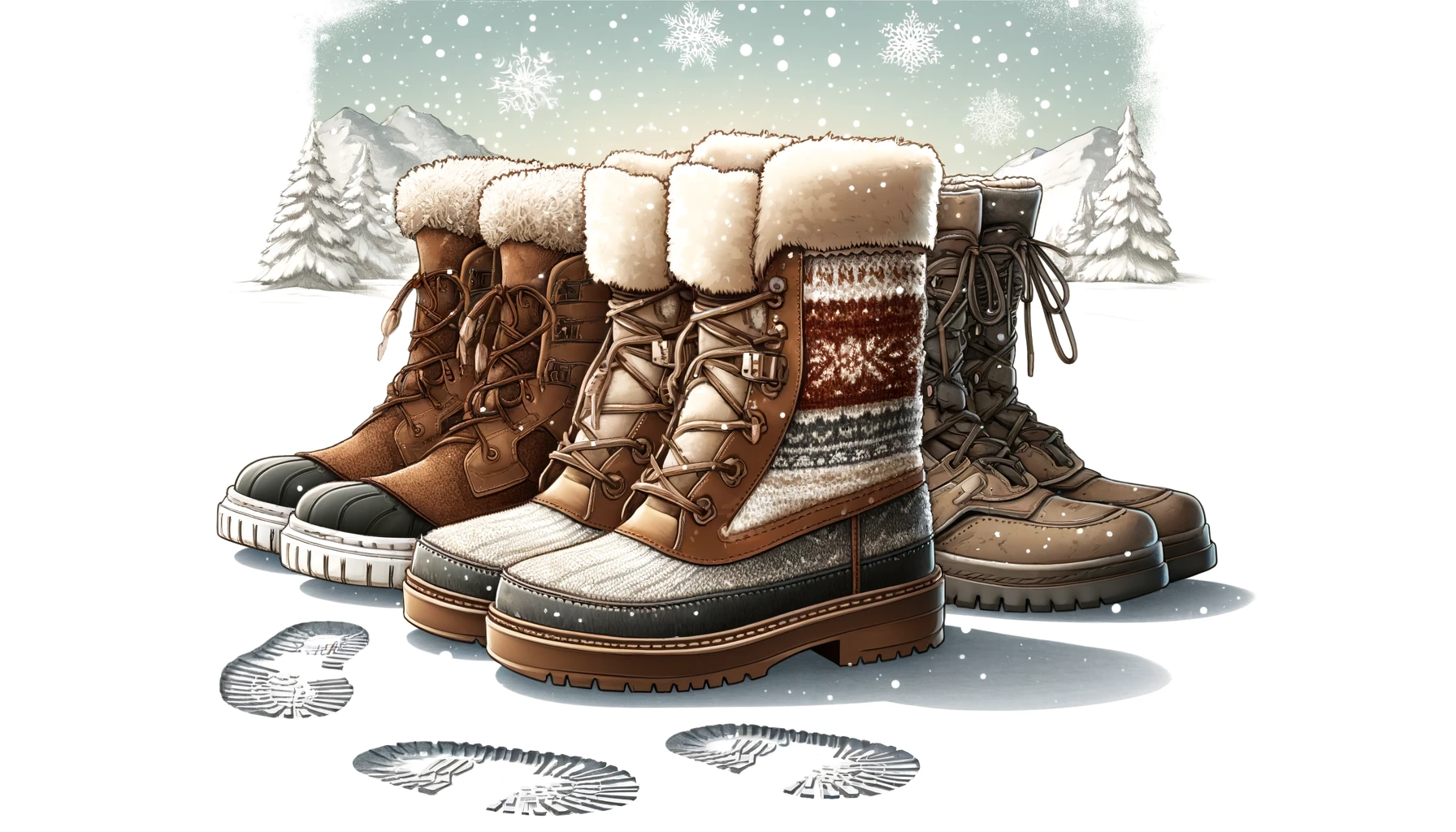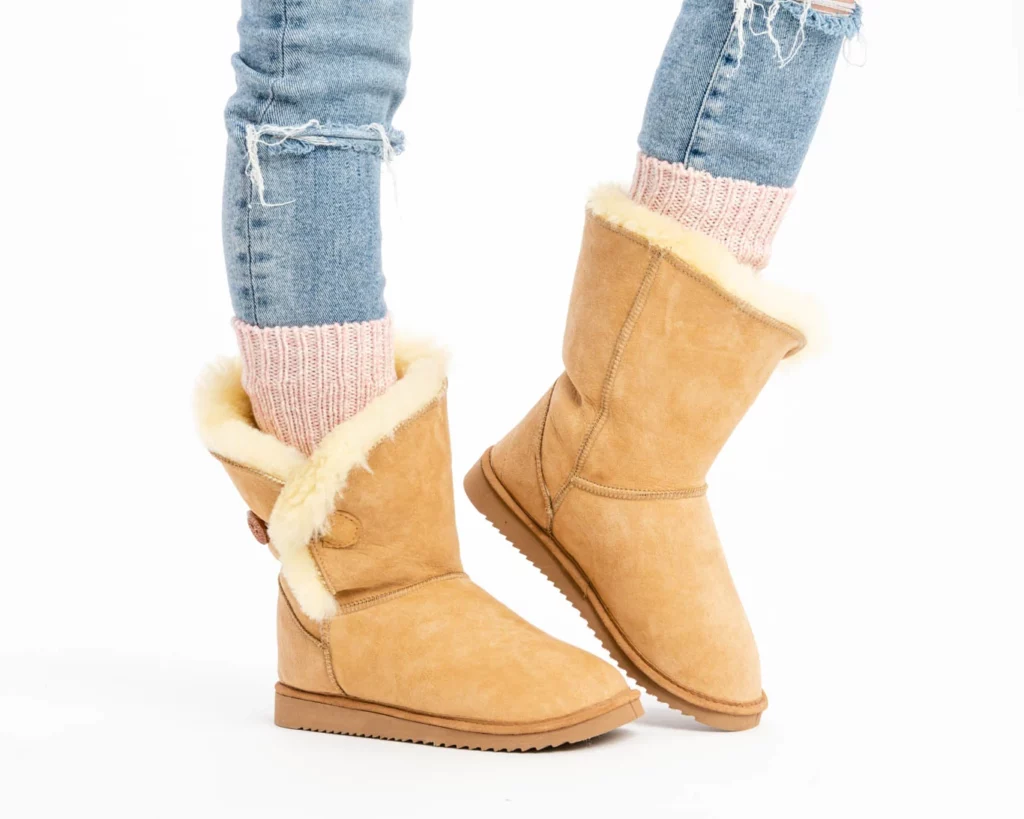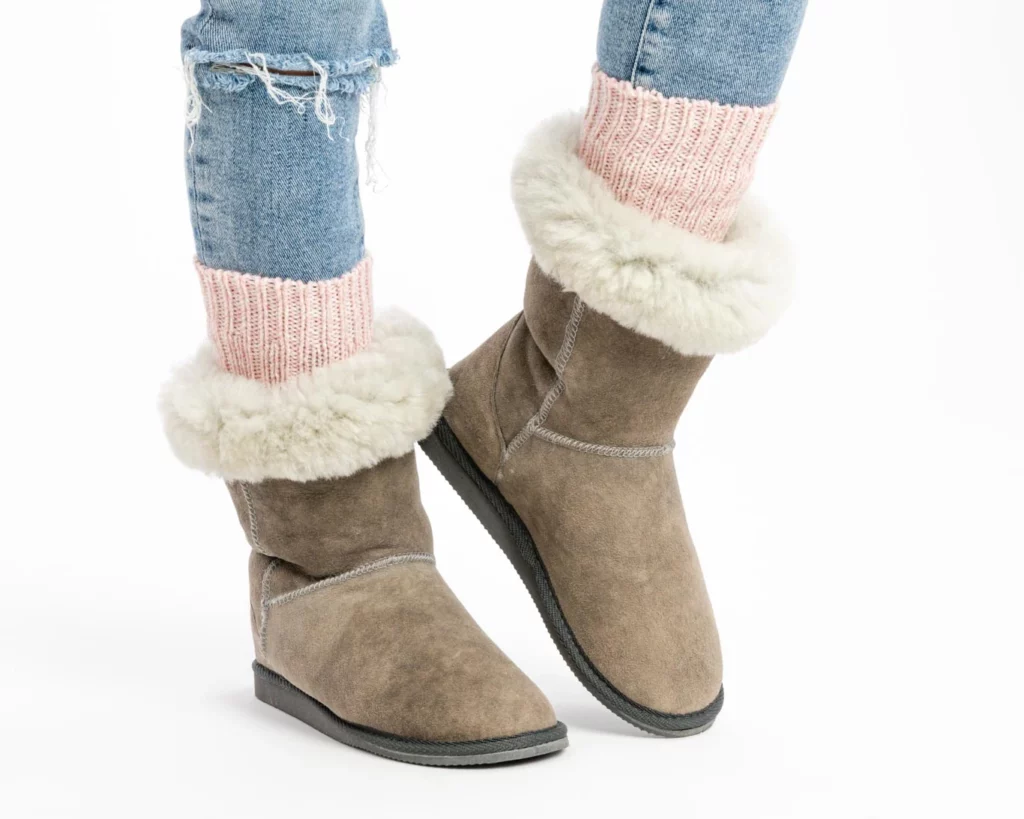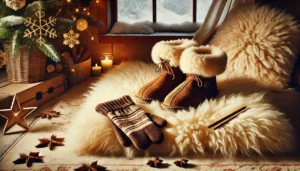18. The Best Slippers for Seniors: Why Sheepskin Outshines the Rest
The Best Slippers for Seniors Optimal Footwear Choices: The Best

Snow boots are an essential component of winter wear, serving a dual purpose of fashion and functionality. As temperatures plummet and snow accumulates, the need for reliable, warm, and stylish footwear becomes paramount. This article explores the evolution of snow boots, the importance of materials like sheepskin and merino wool, and the integration of insulation technologies and design trends that make modern snow boots a perfect blend of form and function.
The development of snow boots has a rich history that mirrors the evolution of human needs and technological advancements. Initially, snow boots were purely utilitarian, designed to protect feet from the harsh elements. Early versions were made from animal hides and furs, providing necessary warmth and waterproofing.
Over time, innovations in material science and fashion influenced the design of snow boots. The introduction of rubber soles in the 19th century marked a significant milestone, offering improved grip and durability. The 20th century saw the integration of synthetic materials, enhancing the boots’ insulating properties and reducing their weight. Today, snow boots are not only functional but also fashionable, available in a variety of styles that cater to different aesthetic preferences.
Materials play a crucial role in the effectiveness of snow boots. Waterproof materials such as Gore-Tex and rubber prevent moisture from penetrating the boots, keeping feet dry. Thermal insulators like Thinsulate and fleece ensure warmth by trapping heat within the boots. Durable soles made from rubber or other synthetic compounds provide traction on slippery surfaces, preventing falls and injuries.
In high-quality snow boots, materials are chosen not just for their protective qualities but also for their comfort. Breathable fabrics allow moisture from sweat to escape, preventing the feet from becoming clammy and cold. The combination of these materials results in snow boots that are both protective and comfortable, ideal for prolonged use in winter conditions.

Sheepskin and merino wool are prized materials in the manufacture of high-quality snow boots. Sheepskin is known for its excellent insulating properties, providing warmth even in the coldest conditions. It is also naturally water-resistant and breathable, ensuring that feet remain dry and comfortable.
Merino wool, derived from merino sheep, is another superior material used in snow boots. It is renowned for its fine fibers, which make it soft and comfortable against the skin. Merino wool is highly effective at regulating temperature, offering warmth in cold weather while wicking moisture away from the skin. This combination of insulation and breathability makes merino wool an ideal choice for snow boots, ensuring comfort and protection in winter conditions.
The evolution of insulation technologies has significantly enhanced the performance of snow boots. Traditional insulating materials, such as wool and down, are still used for their excellent warmth-to-weight ratios. However, modern innovations have introduced materials like Thinsulate, which offers superior insulation without adding bulk.
Thinsulate, a synthetic material, is composed of microfibers that trap more air in less space, providing exceptional warmth. Other advanced materials, such as PrimaLoft, mimic the properties of down while maintaining performance even when wet. These technologies ensure that snow boots keep feet warm in extremely low temperatures without compromising on weight and comfort.

Fashion trends in snow boots are continually evolving, with designers striving to combine functionality with aesthetic appeal. Current trends include a variety of colors, from classic neutrals to bold, vibrant hues. Patterns such as animal prints and plaids are also popular, offering consumers a wide range of choices to express their personal style.
Boot heights vary, from ankle-length to knee-high, catering to different preferences and needs. Some designs feature decorative elements like faux fur trims, buckles, and laces, adding a touch of elegance to functional footwear. Contemporary designers are adept at integrating these stylish elements without compromising the boots’ protective qualities, making snow boots a fashion statement as well as a winter necessity.
For those facing extreme winter conditions, certain features in snow boots are crucial. Reinforced soles with deep treads provide traction on ice and snow, reducing the risk of slips and falls. Water-resistant treatments, such as those using Gore-Tex, ensure that boots remain impermeable to moisture, even in deep snow or slushy conditions.
Thermal linings, often made from materials like fleece or sheepskin, offer additional insulation. Some boots are designed with adjustable closures, such as drawstrings or Velcro straps, allowing for a snug fit that prevents snow from entering. Examples of such boots include those used in polar expeditions or by outdoor workers who require maximum protection and durability in severe cold.
Consumer preferences are increasingly shifting towards eco-friendly and ethically sourced materials. This trend is influencing the snow boot market, with a growing demand for boots made from natural materials like sheepskin and merino wool. These materials are not only sustainable but also offer superior performance in terms of insulation and comfort.
The popularity of eco-friendly products is driving manufacturers to adopt more sustainable practices, such as using recycled materials and reducing their carbon footprint. This shift is reflected in the market, with a wider availability of snow boots that cater to environmentally conscious consumers.
Proper care and maintenance are essential to extend the life and maintain the effectiveness of snow boots. For sheepskin and merino wool boots, it is important to keep them clean and dry. Regularly brushing sheepskin boots with a soft brush can prevent dirt from settling into the fibers. Spot cleaning with a mild detergent is recommended for removing stains.
Merino wool boots should be aired out after each use to allow moisture to evaporate. It is also advisable to store snow boots in a cool, dry place away from direct sunlight, which can cause materials to degrade over time. Following these care tips will ensure that snow boots remain in good condition, providing reliable performance and comfort season after season.
Snow boots are a quintessential part of winter wear, seamlessly combining fashion and functionality. The evolution of their design and materials has made them more effective and stylish than ever before. High-quality materials like sheepskin and merino wool offer unparalleled insulation and comfort, while advanced insulation technologies ensure warmth even in the coldest conditions.
Fashion trends continue to influence snow boot designs, making them a fashionable choice for winter wear. Consumer preferences for sustainable and eco-friendly materials are also shaping the market, driving innovation and sustainability in the industry. Proper care and maintenance will ensure that snow boots remain effective and attractive for years to come.
When choosing snow boots, it is essential to consider both practical and aesthetic factors, ensuring that they meet the demands of winter weather while reflecting personal style. By understanding the materials, technologies, and trends that define snow boots, consumers can make informed decisions that enhance their winter wardrobe and comfort.
The Best Slippers for Seniors Optimal Footwear Choices: The Best

A quality sheepskin rug is more than just a decorative

In a world where climate conditions vary dramatically and sustainability